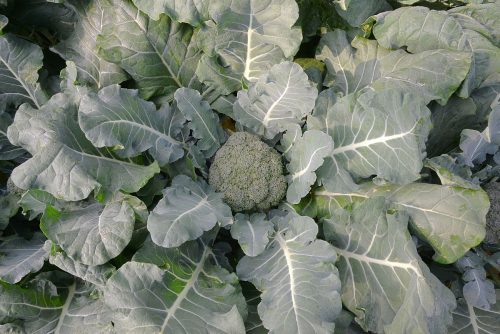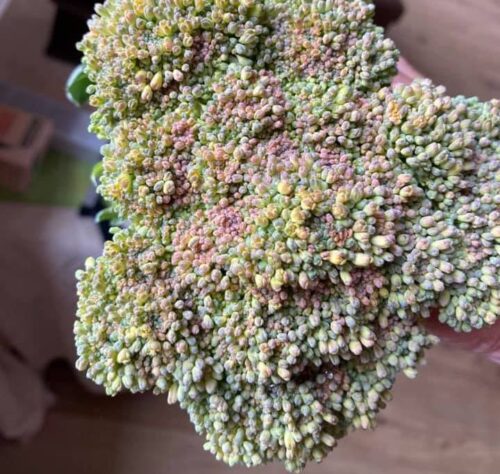Broccoli belongs to the species Brassica oleracea, as do cauliflower, kale and red cabbage. Caterpillars of Large white, Cabbage moth and Cyclamen tortrix, among others, prey on broccoli.
You are viewing the mobile-adapted version of the page.
The one for tablets, laptop and desktop also provides general information, such as origin and cultivation.
Broccoli (Brassica oleracea var. italica) belongs to the to the species Brassica oleracea. Summer and winter species. Sow early broccoli (summer) in late March in greenhouse or windowsill. Transplant to open ground in early May; harvest as early as June. Just like cauliflower, broccoli loves fertile soil and must also be protected against the cabbage root fly by a cabbage collar. Birds like to eat the small plants; a bird netting prevents that. Sow late broccoli (winter) in late May, early June in full, fertilized soil.
Harvesting must be done at the right moment: broccoli is actually an immature flower bud and the flowering process does not stop. If the broccoli is dark green in color, harvest the plant within one or two days.
Bugs
Poor growth; maggots in the root: cabbage root fly (Delia radicum).
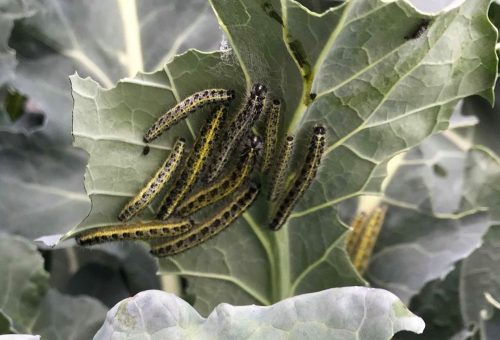
Leaf eating: caterpillars of Large white, Diamondback moth, Cabbage moth, Cyclamen tortrix.
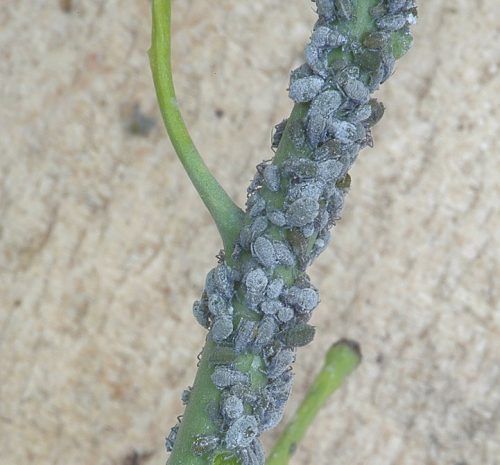
Initially white or purple spots on misshapen leaves (curled, bumpy), then the broccoli is colonized by aphids: Cabbage aphid (Brevicoryne brassicae).
Tunnels and holes: larvae of beetles.
Twisting and distortion of the leaf stems and foliage leading to death of the growing point especially in seedlings: Swede midge (Contarinia nasturtii).
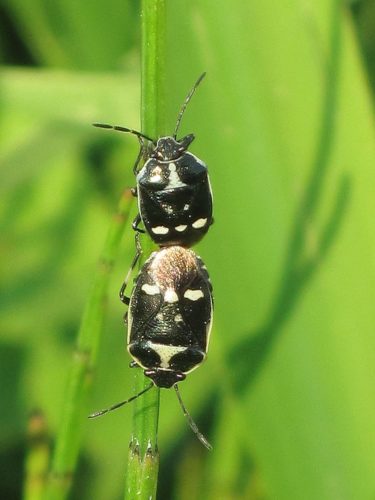
Feeding on young cabbage plants and young shoots by a black bug with three white dots: rape bug (Eurydema oleracea).
Fungi & diseases
Poor growth, plant wilting, swollen roots rotting away: Clubroot (Plasmodiophora brassicae).
White fungal fluff on the underside of the leaves: Downy mildew (Peronosporaceae). It usually involves the lower leaves because the fungus get onto the leaf by splashing rain. In powdery mildew (a species of Ascomycete fungi), the fluff is on the top of the leaves.
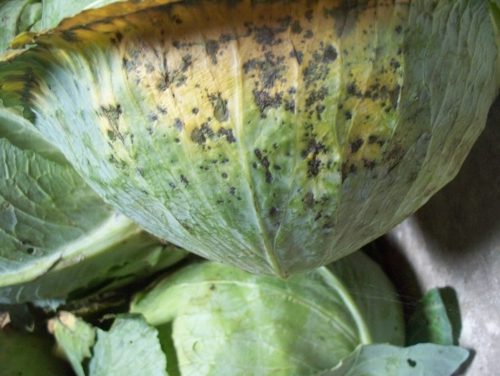
Black spots on cabbage: Dark leaf spot (Alter
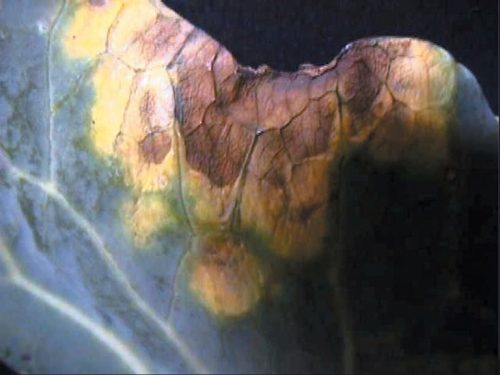
Large yellow, withered spots on leaves, veins turn black, followed by stem rot: black rot (Xanthomonas campestris).

